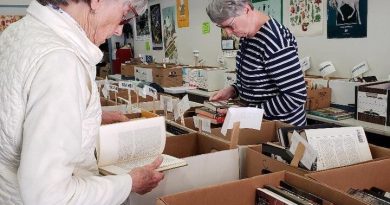Biography examines life of little known Sierra Valley botanist
“John Gill Lemmon: Andersonville Survivor and California Botanist,” a biography published in January 2020, explores the life of a Michigan veteran of the Civil War who became California’s foremost amateur botanist in the years following his ordeal as a prisoner of war at Andersonville, Georgia, and Florence, South Carolina.
Weighing less than 100 pounds when liberated in March of 1865, Lemmon never fully recovered physically or emotionally. The next year he joined his family in Sierra Valley in northeastern California, where his survival was questionable.
A few months after his arrival in California, the emaciated veteran began writing accounts of his wartime experiences that appeared in the Marysville Daily Appeal, Downieville Mountain Messenger and Quincy Plumas National.
Interested in botany since boyhood, Lemmon’s focus on the horrors he had experienced during the war was diverted by the unfamiliar plants he found in High Sierra valleys and his desire to document his wartime experiences. The explosion of floral color in the spring of 1867 rekindled an interest that evolved into a life’s work.
For more than a decade, Lemmon explored the valleys, mountains, and deserts of northeastern California and western Nevada in quest of plants unknown to science. His interest attracted the attention of the nation’s premier botanist, Harvard professor Asa Gray; German-born George Engelmann; and other leaders in the profession.
The book also sketches accounts of other members of the Lemmon family attracted to California by the gold rush who eventually pioneered Sierra Valley before the Civil War.
By 1880, Lemmon had relocated in Oakland and married Sara Plummer, who shared his interest in botany. Mount Lemmon overlooking Tucson, Arizona, which the Lemmons climbed on their botanizing honeymoon, was named for Sara, the first white woman to reach the summit. She also led the crusade to designate the Golden Poppy as the state flower of California.
Despite demons spawned by the Civil War, by the end of the 19th century, Lemmon and his wife had become the best known botanists in California, according to Dr. Willis Jepson, an early professor of botany at the University of California, Berkeley. Some of the books and pamphlets Lemmon wrote, particularly about the forests of California, remain in print, and many of the plants he and his wife discovered bear their names.
For more information about the book, search for John Gill Lemmon on Amazon.com. Various parts of the book, including the first six pages of Chapter 1, can be read online.




